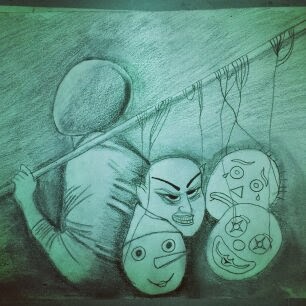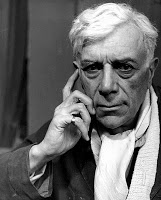I was so excited that I finally got into semester 2...So,this was the first day of 2D design with Miss.Lisa.As we were told to bring our basic tools to class and after that we were asked to make anything about how we feel right now or our self portrait as similar as what we did in semester 1.We can even use materials that we can get around in the campus.
Then,I decided not to find anythings in campus as I did it in semester 1,I tried to do something differently.Eventually,I did a drawing which describe myself and what I was thinking in that moment.
Then,I decided not to find anythings in campus as I did it in semester 1,I tried to do something differently.Eventually,I did a drawing which describe myself and what I was thinking in that moment.

A man with four masks...Basically,the man who is holding the faces doesn't have any expression as I imagined it as myself.The original 'me' don't have any expressions,don't know about myself and as time goes on,I see things! I finally find myself,I'm getting more confident,I know what should I do right now,I have to work harder and harder in order to success.One of my classmate saw this drawing and she just asked me 'do you wear any mask before you going out?' The answer is yes,I do! But I would just wear the happy mask when I'm going out,that's why I drew 2 happy faces out of 4 in the drawing,because I think that's me.People know that I always keep smiling whenever I get something troubles,happy face covers me,it covers my heart,that's why people don't really see my evil face or sad face,because I normally won't show that kind of expressions especially in front of people.I want to make people around me be happy,I want to be stronger.This is me!



















































